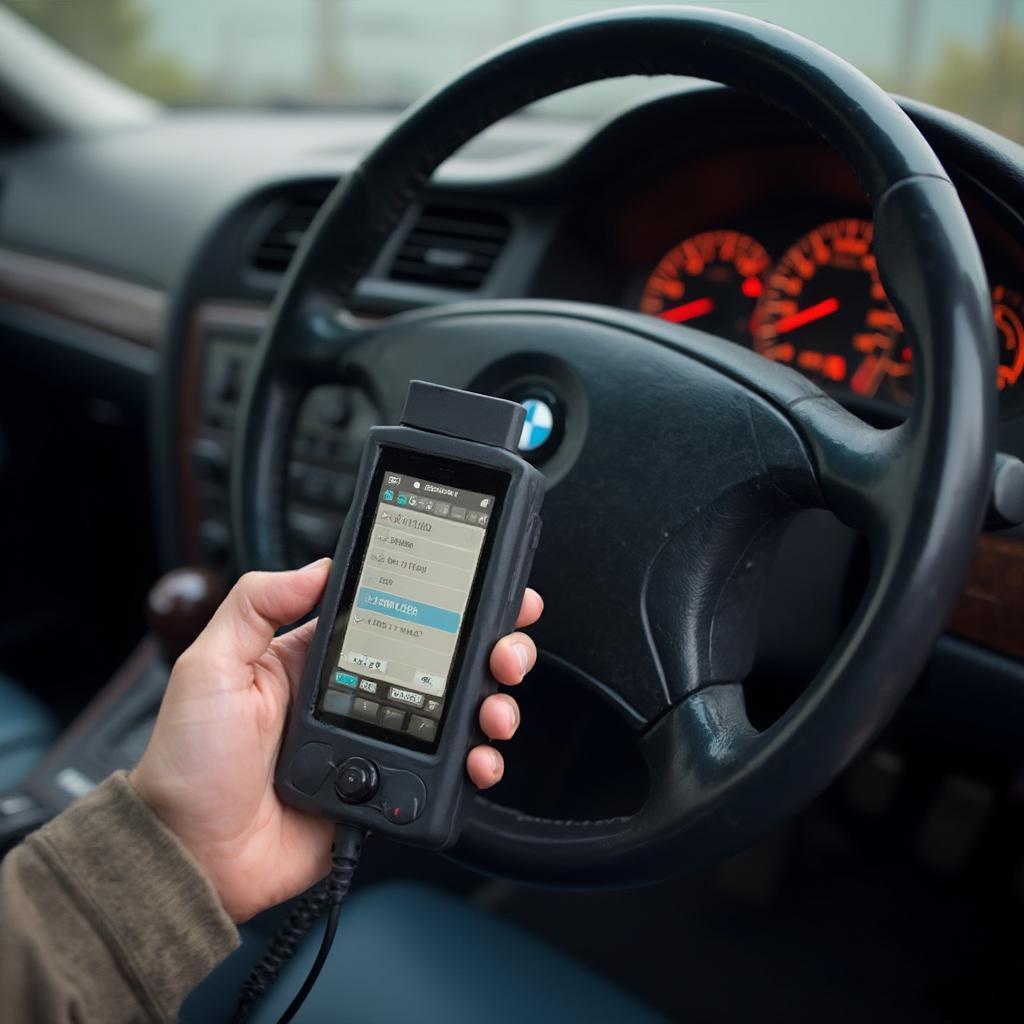The E38 generation of BMW 7 Series, produced from 1994 to 2001, marked a significant advancement in automotive technology. A key feature of these vehicles is the OBD2 system, which provides valuable insights into your car’s engine and emission control systems. Understanding how to use an OBD2 scanner on your 1999 E38 can help you diagnose problems, maintain optimal performance, and potentially save on costly repairs.
What is OBD2 and Why is it Important for Your 1999 E38?
OBD2, short for On-Board Diagnostics, is a standardized system that allows external devices, like scanners, to communicate with your car’s computer. Introduced in 1996, all cars manufactured from this year onwards, including your 1999 E38, are equipped with this system.
The beauty of OBD2 lies in its ability to provide real-time data and fault codes related to your car’s engine, transmission, emissions, and other crucial systems. By reading these codes, you can pinpoint the source of a problem, helping you decide on the appropriate course of action. This can be especially valuable for a sophisticated vehicle like the E38, which has complex electronic systems.
Finding the OBD2 Port on Your 1999 E38
Locating the OBD2 port on your 1999 E38 is simple. It’s typically found under the dashboard on the driver’s side, near the steering column. The port is a trapezoidal 16-pin connector, often covered by a small plastic flap.
Choosing the Right OBD2 Scanner for Your E38
With countless OBD2 scanners on the market, selecting the right one can be daunting. Here are some factors to consider:
- Basic Code Readers: Affordable and easy to use, these devices can read and clear basic engine fault codes. Suitable for DIY enthusiasts seeking basic diagnostics.
- Advanced Scan Tools: Offering more features like live data streaming, ABS and airbag diagnostics, these tools cater to experienced users and professionals.
- Manufacturer-Specific Scanners: Tailored for BMW vehicles, these scanners provide in-depth diagnostics and access to manufacturer-specific codes.
Common E38 1999 OBD2 Codes and Their Meanings
Understanding the meaning of OBD2 codes is crucial for effective troubleshooting. Here are some common codes you might encounter on your 1999 E38:
- P0171 and P0174: Indicate a lean fuel mixture, potentially caused by a vacuum leak, faulty oxygen sensor, or fuel pressure issues.
- P0300 – P0308: Represent engine misfires, with the specific code indicating the affected cylinder. Causes range from faulty spark plugs or ignition coils to vacuum leaks or fuel delivery problems.
- P0440: Points to an evaporative emission control system leak, often due to a loose gas cap, damaged fuel lines, or a faulty charcoal canister.
Beyond Code Reading: Leveraging OBD2 Data
Modern OBD2 scanners offer more than just code reading. Advanced features like live data streaming provide real-time insights into your E38’s performance. This data can be invaluable for:
- Monitoring Engine Parameters: Track vital engine parameters like RPM, coolant temperature, and oxygen sensor readings to identify potential issues before they escalate.
- Evaluating Sensor Performance: Assess the health of various sensors, such as the MAF sensor, throttle position sensor, and oxygen sensors.
- Analyzing Fuel Efficiency: Monitor fuel consumption patterns and identify factors affecting your E38’s fuel economy.
Conclusion
The OBD2 system on your 1999 E38 is a powerful tool for understanding your car’s health and addressing any issues. By investing in a suitable OBD2 scanner and learning how to interpret the data it provides, you can maintain your E38 in optimal condition, ensure smooth performance, and potentially save on costly repairs. Remember, regular diagnostics can go a long way in prolonging the life of your cherished E38.

